[ 2024.07.13 ] 【Pitten TRAVEL】7月14日は、フランス革命記念日(パリ祭)
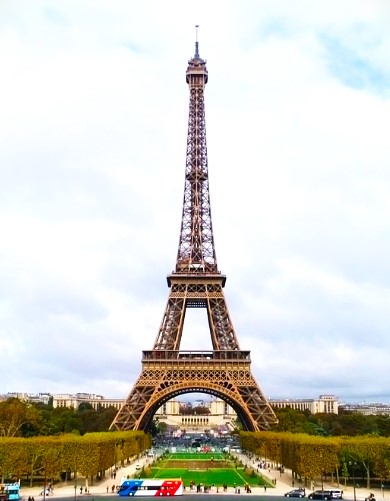
フランス革命記念日、通称パリ祭は、フランスで7月14日に祝われる共和国の建国記念日です。その起源は、1789年7月14日にパリの民衆がバスチーユ監獄を襲撃したことに遡ります。この事件がフランス革命の発端となったため、翌年の1790年7月14日に全国連盟祭が行われ、これが現在のパリ祭の始まりとなりました。
どんな国?
フランス共和国は西ヨーロッパに位置する共和制国家で、首都はパリです。世界的な影響力を持つ先進国で、G7、G20などの主要メンバーで、核保有国でもあります。経済力も高く、名目GDPは世界7位でユーロ圏第2位です。
Pitten TRAVEL:フランスを動画でみる
フランス革命とは
フランス革命は、1789年から始まったフランスにおける歴史的な変革です。当時のフランスでは、贅沢な生活を送る貴族や聖職者が優遇され、国民の大部分を占める平民は重い税金や身分差別に苦しんでいました。
革命の意義は、国民が平等な社会を目指して立ち上がったことにあります。人々を苦しめていた古い身分制度や不平等な税制は廃止され、自由と平等を謳った「人間と市民の権利の宣言」が採択されました。
ブルジョワジーと呼ばれる商人や資本家など、新しい力が台頭したことも大きな変化です。彼らは経済力を背景に政治にも影響力を持つようになり、フランス社会は大きく変わりました。
フランス革命は、その後の世界に多大な影響を与えました。人々に自由と平等の大切さを認識させ、近代社会の基礎を作るきっかけとなったのです。
どんな国?
フランス共和国は西ヨーロッパに位置する共和制国家で、首都はパリです。世界的な影響力を持つ先進国で、G7、G20などの主要メンバーで、核保有国でもあります。経済力も高く、名目GDPは世界7位でユーロ圏第2位です。
Pitten TRAVEL:フランスを動画でみる
フランス革命とは
フランス革命は、1789年から始まったフランスにおける歴史的な変革です。当時のフランスでは、贅沢な生活を送る貴族や聖職者が優遇され、国民の大部分を占める平民は重い税金や身分差別に苦しんでいました。
革命の意義は、国民が平等な社会を目指して立ち上がったことにあります。人々を苦しめていた古い身分制度や不平等な税制は廃止され、自由と平等を謳った「人間と市民の権利の宣言」が採択されました。
ブルジョワジーと呼ばれる商人や資本家など、新しい力が台頭したことも大きな変化です。彼らは経済力を背景に政治にも影響力を持つようになり、フランス社会は大きく変わりました。
フランス革命は、その後の世界に多大な影響を与えました。人々に自由と平等の大切さを認識させ、近代社会の基礎を作るきっかけとなったのです。
ENGLISH
July 14th is Bastille Day (Paris Festival)
Bastille Day, commonly known as Bastille Day, is celebrated in France on July 14th as the founding day of the Republic. Its origins date back to the storming of the Bastille prison by the people of Paris on July 14th, 1789. This incident marked the beginning of the French Revolution, so the National Federation Festival was held the following year on July 14th, 1790, which marked the beginning of the current Bastille Day.
What kind of country is it?
The French Republic is a republic located in Western Europe, with its capital being Paris. It is a developed country with global influence, a major member of the G7 and G20, and is also a nuclear power. It also has a strong economy, with a nominal GDP ranking 7th in the world and 2nd in the Eurozone.
Pitten TRAVEL: Watch France on video
What is the French Revolution?
The French Revolution was a historic change in France that began in 1789. At that time in France, aristocrats and clergy who lived luxurious lives were given preferential treatment, while the commoners, who made up the majority of the population, suffered from heavy taxes and class discrimination.
The significance of the revolution is that the people rose up to aim for an equal society. The old class system and unequal tax system that had oppressed the people were abolished, and the "Declaration of the Rights of Man and of the Citizen", which proclaimed freedom and equality, was adopted.
The rise of new forces, such as merchants and capitalists known as the bourgeoisie, was also a major change. With their economic power as a backdrop, they gained influence in politics, and French society changed dramatically.
The French Revolution had a huge impact on the world thereafter. It made people realize the importance of freedom and equality, and became the catalyst for laying the foundations of modern society.
What kind of country is it?
The French Republic is a republic located in Western Europe, with its capital being Paris. It is a developed country with global influence, a major member of the G7 and G20, and is also a nuclear power. It also has a strong economy, with a nominal GDP ranking 7th in the world and 2nd in the Eurozone.
Pitten TRAVEL: Watch France on video
What is the French Revolution?
The French Revolution was a historic change in France that began in 1789. At that time in France, aristocrats and clergy who lived luxurious lives were given preferential treatment, while the commoners, who made up the majority of the population, suffered from heavy taxes and class discrimination.
The significance of the revolution is that the people rose up to aim for an equal society. The old class system and unequal tax system that had oppressed the people were abolished, and the "Declaration of the Rights of Man and of the Citizen", which proclaimed freedom and equality, was adopted.
The rise of new forces, such as merchants and capitalists known as the bourgeoisie, was also a major change. With their economic power as a backdrop, they gained influence in politics, and French society changed dramatically.
The French Revolution had a huge impact on the world thereafter. It made people realize the importance of freedom and equality, and became the catalyst for laying the foundations of modern society.
[ 2024.07.13 ] 【Pitten ZOO】7月14日は、世界チンパンジーの日です。
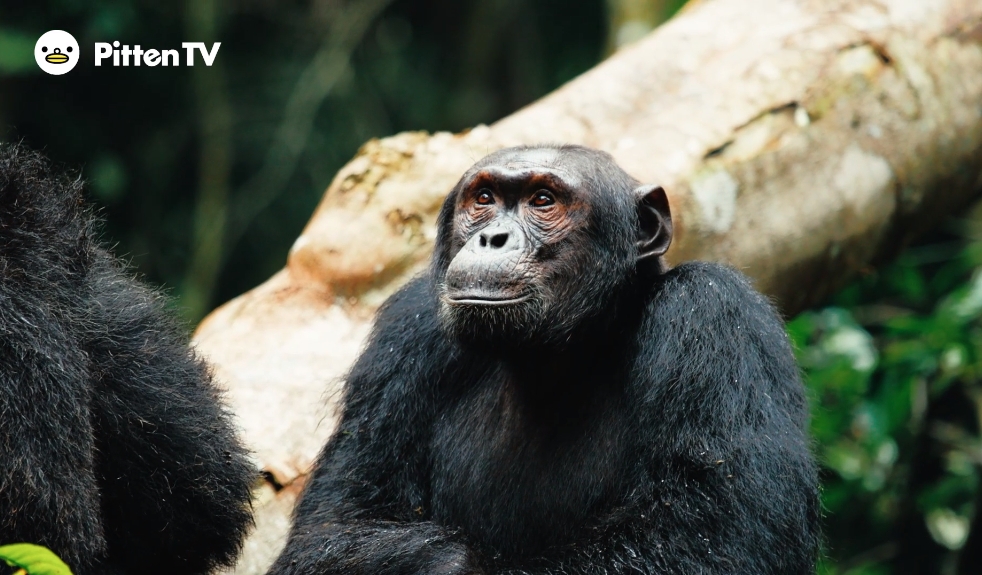
世界チンパンジーの日は、毎年7月14日に祝われ、チンパンジーという素晴らしい種を称え、世界中の人々にその魅力と窮状を知ってもらうことを目的としています。 この記念日は、1960年7月14日、野生のチンパンジー研究のパイオニアであるジェーン・グドール博士が、現在のタンザニアのゴンベ国立公園で画期的な研究を開始したことを記念して、2018年に創設されました。
どんな動物?
チンパンジーは類人猿の一種であり、サルとは異なり尾を持ちません。彼らは全身の毛が黒く、顔は黒色または肌色です。成長にともない額が上がり、オスの場合はより顕著になります。蟻塚に棒を差し込んでシロアリを捕食するなど、簡単な道具を使います。
Pitten ZOO:チンパンジーを動画でみる
参考)
https://worldchimpanzeeday.org/
どんな動物?
チンパンジーは類人猿の一種であり、サルとは異なり尾を持ちません。彼らは全身の毛が黒く、顔は黒色または肌色です。成長にともない額が上がり、オスの場合はより顕著になります。蟻塚に棒を差し込んでシロアリを捕食するなど、簡単な道具を使います。
Pitten ZOO:チンパンジーを動画でみる
参考)
https://worldchimpanzeeday.org/
ENGLISH
July 14th is World Chimpanzee Day.
World Chimpanzee Day is celebrated every year on July 14th, with the aim of honouring this amazing species and educating people around the world about their fascinating and plight. The day was established in 2018 to commemorate the day on July 14th, 1960, when Dr Jane Goodall, a pioneer in wild chimpanzee research, began her groundbreaking research in what is now Gombe National Park in Tanzania.
What kind of animal is it?
Chimpanzees are a type of ape, and unlike monkeys, they do not have tails. They have black hair all over their body and black or flesh-coloured faces. Their foreheads rise as they grow, and are more pronounced in males. They use simple tools, such as inserting a stick into an anthill to catch termites.
Pitten ZOO: Watch a video of chimpanzees
Reference)
https://worldchimpanzeeday.org/
What kind of animal is it?
Chimpanzees are a type of ape, and unlike monkeys, they do not have tails. They have black hair all over their body and black or flesh-coloured faces. Their foreheads rise as they grow, and are more pronounced in males. They use simple tools, such as inserting a stick into an anthill to catch termites.
Pitten ZOO: Watch a video of chimpanzees
Reference)
https://worldchimpanzeeday.org/
[ 2024.07.12 ] 【Pitten ZOO】7月14日は、世界シャチの日です。
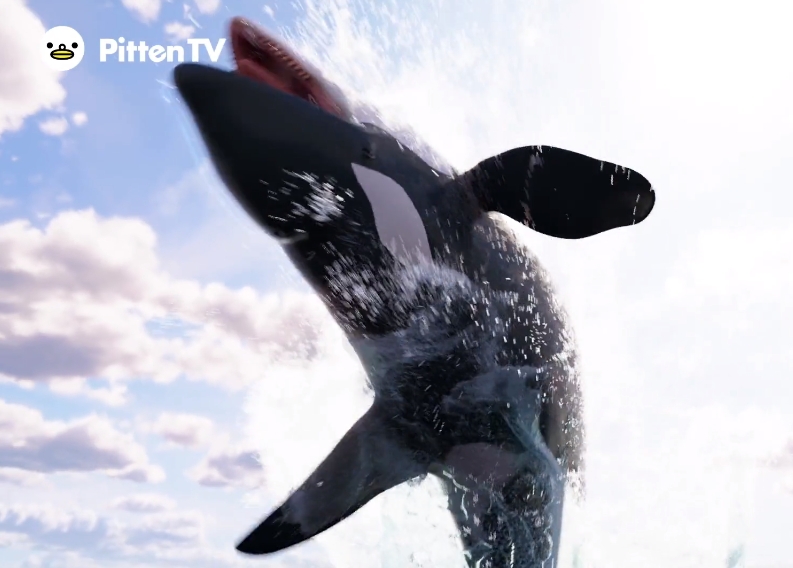
World Orca Day(世界シャチの日)は、毎年7月14日に開催されるシャチを祝う国際的な記念日です。この日は、シャチとその生息する海洋環境に対する認識を高め、保護を促進することを目的としています。
世界シャチの日は、2013年11月8日にボストンで開催された世界クジラ会議で、シャチ研究者のIngrid N. Visser博士によって提唱されました。最初の記念日は2014年7月14日に実施され、以来毎年開催されています。
どんな動物?
シャチは、イルカ科に属する歯クジラの一種です。特徴的な白黒の体色パターンで知られ、世界中の海洋に生息しています。シャチは海洋生態系の頂点捕食者であり、その知能と社会性の高さから多くの人々を魅了しています。
Pitten ZOO:シャチを動画でみる
世界シャチの日は、シャチという魅力的な生物を通じて、海洋環境の保護と持続可能性の重要性を訴える重要な機会となっています。
参考)
世界シャチの日の歴史#WorldOrcaDay
世界シャチの日は、2013年11月8日にボストンで開催された世界クジラ会議で、シャチ研究者のIngrid N. Visser博士によって提唱されました。最初の記念日は2014年7月14日に実施され、以来毎年開催されています。
どんな動物?
シャチは、イルカ科に属する歯クジラの一種です。特徴的な白黒の体色パターンで知られ、世界中の海洋に生息しています。シャチは海洋生態系の頂点捕食者であり、その知能と社会性の高さから多くの人々を魅了しています。
Pitten ZOO:シャチを動画でみる
世界シャチの日は、シャチという魅力的な生物を通じて、海洋環境の保護と持続可能性の重要性を訴える重要な機会となっています。
参考)
世界シャチの日の歴史#WorldOrcaDay
ENGLISH
July 14th is World Killer Whale Day.
World Orca Day is an international day to celebrate orcas, held on July 14th every year. The day aims to raise awareness and promote conservation of killer whales and the marine environment they live in.
World Orca Day was proposed by orca researcher Dr. Ingrid N. Visser at the World Whale Congress held in Boston on November 8, 2013. The first anniversary was held on July 14, 2014 and has been held every year since.
What kind of animal?
Killer whales are a type of toothed whale that belongs to the family Dolphinidae. Known for their distinctive black and white color pattern, they live in oceans around the world. Killer whales are the apex predators of the marine ecosystem, and their intelligence and sociability fascinate many people.
Pitten ZOO: Watch a video of killer whales
World Killer Whale Day is an important opportunity to highlight the importance of protecting and sustaining the marine environment through the fascinating creatures of the killer whale.
reference)
World Orca Day History #WorldOrcaDay
World Orca Day was proposed by orca researcher Dr. Ingrid N. Visser at the World Whale Congress held in Boston on November 8, 2013. The first anniversary was held on July 14, 2014 and has been held every year since.
What kind of animal?
Killer whales are a type of toothed whale that belongs to the family Dolphinidae. Known for their distinctive black and white color pattern, they live in oceans around the world. Killer whales are the apex predators of the marine ecosystem, and their intelligence and sociability fascinate many people.
Pitten ZOO: Watch a video of killer whales
World Killer Whale Day is an important opportunity to highlight the importance of protecting and sustaining the marine environment through the fascinating creatures of the killer whale.
reference)
World Orca Day History #WorldOrcaDay
[ 2024.07.06 ] 【Pitten ZOO】7月7日は、タツノオトシゴの日です。(日本)
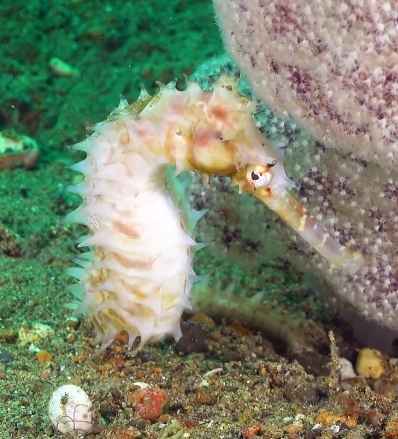
7月7日は、七夕ですが、「タツノオトシゴの日」でもあります。この記念日は、伊勢シーパラダイス(三重県伊勢市)によって提案され、日本記念日協会に登録されています。
理由は、タツノオトシゴの泳ぐ姿が数字の「7」に似ていること、七夕とのロマンチックな雰囲気が合致すること、縁結びや安産などのご利益があると信じられていること、そして夫婦で協力して子育てをする姿が愛を祝う七夕にふさわしいと考えられたためです。
どんないきもの?
タツノオトシゴは、とてもユニークな魚です。馬の顔みたいな頭と、くるくる巻いた尾っぽを持っていて、まっすぐ立って泳ぎます。浅い海の、海藻がたくさんあるところに住んでいます。
Pitten ZOO:タツノオトシゴを動画でみる
「タツノオトシゴの日」の制定を通じて、伊勢シーパラダイスはタツノオトシゴ類の現状や生態、繁殖などの取り組みを広く知ってもらうことを目指しているとのことです。
伊勢シーパラダイスでは、この記念日を祝して様々なイベントを開催しています。なかでも、7月7日午後17時から「タツノオトシゴの日」特別講座がYouTubeでライブ配信されるとのことです。
伊勢シーパラダイス 公式チャンネル
理由は、タツノオトシゴの泳ぐ姿が数字の「7」に似ていること、七夕とのロマンチックな雰囲気が合致すること、縁結びや安産などのご利益があると信じられていること、そして夫婦で協力して子育てをする姿が愛を祝う七夕にふさわしいと考えられたためです。
どんないきもの?
タツノオトシゴは、とてもユニークな魚です。馬の顔みたいな頭と、くるくる巻いた尾っぽを持っていて、まっすぐ立って泳ぎます。浅い海の、海藻がたくさんあるところに住んでいます。
Pitten ZOO:タツノオトシゴを動画でみる
「タツノオトシゴの日」の制定を通じて、伊勢シーパラダイスはタツノオトシゴ類の現状や生態、繁殖などの取り組みを広く知ってもらうことを目指しているとのことです。
伊勢シーパラダイスでは、この記念日を祝して様々なイベントを開催しています。なかでも、7月7日午後17時から「タツノオトシゴの日」特別講座がYouTubeでライブ配信されるとのことです。
伊勢シーパラダイス 公式チャンネル
ENGLISH
[Pitten ZOO] July 7th is Seahorse Day in Japan.
July 7th is Tanabata, but it is also "Seahorse Day." This day was proposed by Ise Sea Paradise (Ise City, Mie Prefecture) and is registered with the Japan Anniversary Association.
The reason is that the swimming figure of a seahorse resembles the number "7," it matches the romantic atmosphere of Tanabata, it is believed to bring good luck such as matchmaking and safe childbirth, and the image of a husband and wife working together to raise a child was thought to be appropriate for Tanabata, which celebrates love.
What kind of creature is it?
Seahorses are very unique fish. They have a horse-face-like head and a curled tail, and they swim upright. They live in shallow seas where there is a lot of seaweed.
Pitten ZOO: Watch a video of seahorses
Through the establishment of "Seahorse Day," Ise Sea Paradise aims to raise awareness of the current situation, ecology, and breeding efforts of seahorses.
Ise Sea Paradise is holding various events to celebrate this anniversary. In particular, a special "Seahorse Day" lecture will be livestreamed on YouTube from 5:00 p.m. on July 7th.
Ise Sea Paradise Official Channel
The reason is that the swimming figure of a seahorse resembles the number "7," it matches the romantic atmosphere of Tanabata, it is believed to bring good luck such as matchmaking and safe childbirth, and the image of a husband and wife working together to raise a child was thought to be appropriate for Tanabata, which celebrates love.
What kind of creature is it?
Seahorses are very unique fish. They have a horse-face-like head and a curled tail, and they swim upright. They live in shallow seas where there is a lot of seaweed.
Pitten ZOO: Watch a video of seahorses
Through the establishment of "Seahorse Day," Ise Sea Paradise aims to raise awareness of the current situation, ecology, and breeding efforts of seahorses.
Ise Sea Paradise is holding various events to celebrate this anniversary. In particular, a special "Seahorse Day" lecture will be livestreamed on YouTube from 5:00 p.m. on July 7th.
Ise Sea Paradise Official Channel
[ 2024.07.03 ] 【Pitten TRAVEL】7月4日は、アメリカ合衆国の独立記念日です。
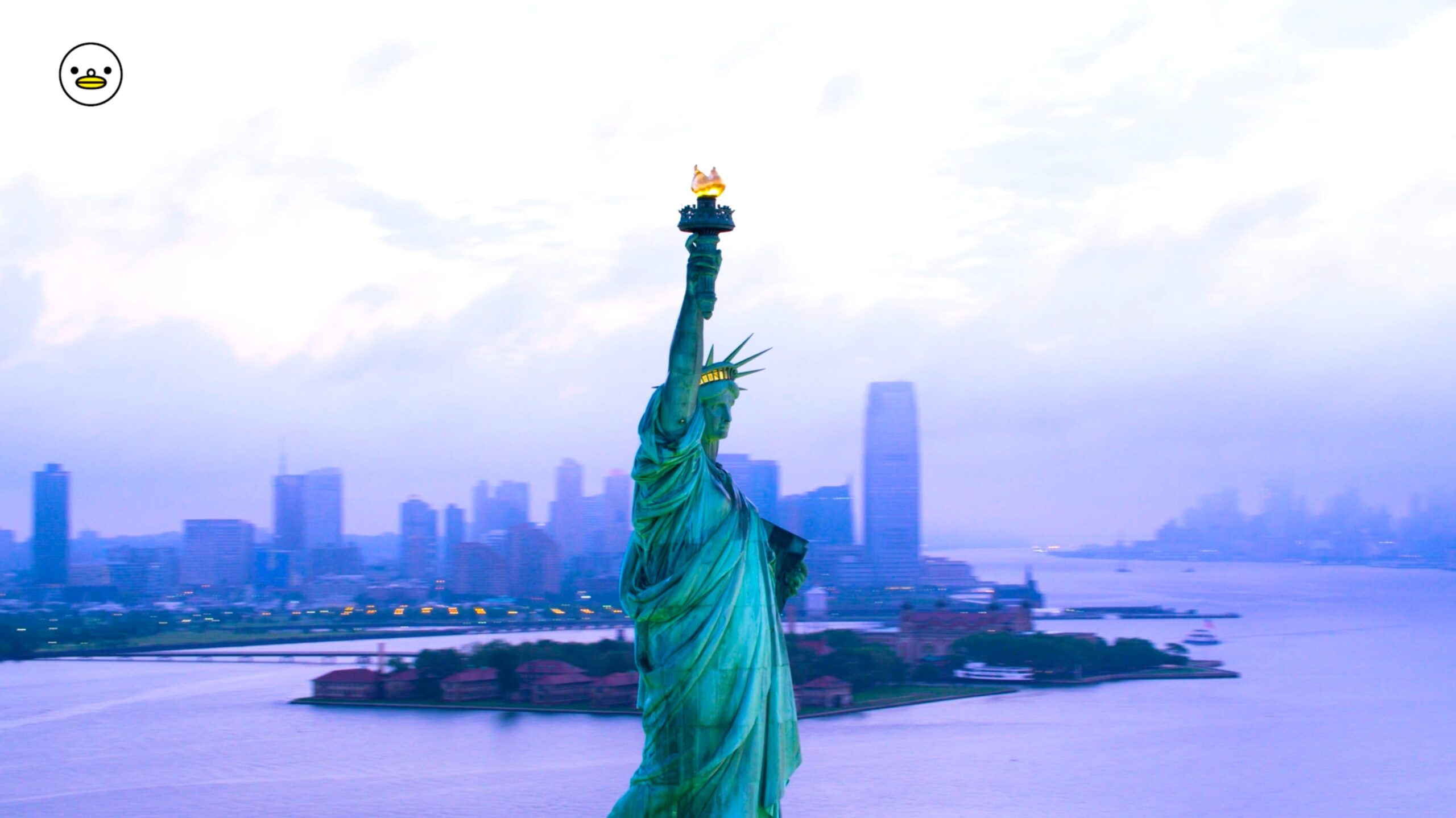
アメリカ独立記念日(Independence Day)は、1776年7月4日に議会で採択された独立宣言を記念する祝日です。独立記念日は、花火、パレード、バーベキューなど、様々なイベントが開催され、アメリカの建国と伝統を祝います。
Pitten TRAVEL:アメリカ合衆国を動画でみる
独立記念日はアメリカの歴史、自由、民主主義の価値観を再認識する日であり、アメリカ人にとって愛国心を表現し、国の歴史を振り返る重要な機会となっています。同時に、小売業者にとっては大きな商機でもあり、花火やバーベキュー用品、国旗関連商品の売り上げが伸びる時期でもあります。
独立の時系列
・1775年:アメリカ独立戦争(American Revolutionary War)勃発。
・1776年7月2日:大陸会議が独立を決議。
★1776年7月4日:独立宣言が採択。
・1783年9月3日:パリ条約(Treaty of Paris)でイギリスがアメリカの独立を正式に承認。
Pitten TRAVEL:アメリカ合衆国を動画でみる
独立記念日はアメリカの歴史、自由、民主主義の価値観を再認識する日であり、アメリカ人にとって愛国心を表現し、国の歴史を振り返る重要な機会となっています。同時に、小売業者にとっては大きな商機でもあり、花火やバーベキュー用品、国旗関連商品の売り上げが伸びる時期でもあります。
独立の時系列
・1775年:アメリカ独立戦争(American Revolutionary War)勃発。
・1776年7月2日:大陸会議が独立を決議。
★1776年7月4日:独立宣言が採択。
・1783年9月3日:パリ条約(Treaty of Paris)でイギリスがアメリカの独立を正式に承認。
ENGLISH
July 4th is the Independence Day of the United States of America.
Independence Day is a national holiday commemorating the Declaration of Independence, adopted by Congress on July 4, 1776. On Independence Day, various events such as fireworks, parades, and barbecues are held to celebrate the founding and traditions of the United States.
Pitten TRAVEL: Watch the United States on video
Independence Day is a day to reaffirm the values of American history, freedom, and democracy, and is an important opportunity for Americans to express patriotism and reflect on the country's history. At the same time, it is a great business opportunity for retailers, and is a time when sales of fireworks, barbecue supplies, and flag-related products increase.
Timeline of Independence
・1775: The American Revolutionary War breaks out.
・July 2, 1776: The Continental Congress votes for independence.
★July 4, 1776: The Declaration of Independence is adopted.
・September 3, 1783: The United States declares independence.
Pitten TRAVEL: Watch the United States on video
Independence Day is a day to reaffirm the values of American history, freedom, and democracy, and is an important opportunity for Americans to express patriotism and reflect on the country's history. At the same time, it is a great business opportunity for retailers, and is a time when sales of fireworks, barbecue supplies, and flag-related products increase.
Timeline of Independence
・1775: The American Revolutionary War breaks out.
・July 2, 1776: The Continental Congress votes for independence.
★July 4, 1776: The Declaration of Independence is adopted.
・September 3, 1783: The United States declares independence.
[ 2024.07.02 ] 【Pitten ZOO】7月3日は、世界ミーアキャットの日です。

毎年7月3日は「世界ミーアキャットの日」として定められています。この日は、ミーアキャットの生態や魅力を広く伝え、保護の重要性を啓発することを目的としています。
ミーアキャットの日は、2018年にオーストラリアのタロンガ西部平原動物園で最初に祝われました。発案者は同園のミーアキャット飼育係であるKaren Ellis(James)さんです。
どんな動物?
ミーアキャットはマングースの仲間で、アフリカの半砂漠地帯が主な生息地です。 群れで生活し、母親をリーダーとする社会的な動物です。群れで協力して餌集め、警戒、子育てなどを行います。 また、ミーアキャットは目の周りの黒い毛が「サングラス」の役割を果たし、晴れた日でも空から来る捕食者を見つけられるよう進化しています。
Pitten ZOO:ミーアキャットを動画でみる
参考)
https://www.taronga.org.au/News/2023-06-23/Home-of-world-Meerkat-day
ミーアキャットの日は、2018年にオーストラリアのタロンガ西部平原動物園で最初に祝われました。発案者は同園のミーアキャット飼育係であるKaren Ellis(James)さんです。
どんな動物?
ミーアキャットはマングースの仲間で、アフリカの半砂漠地帯が主な生息地です。 群れで生活し、母親をリーダーとする社会的な動物です。群れで協力して餌集め、警戒、子育てなどを行います。 また、ミーアキャットは目の周りの黒い毛が「サングラス」の役割を果たし、晴れた日でも空から来る捕食者を見つけられるよう進化しています。
Pitten ZOO:ミーアキャットを動画でみる
参考)
https://www.taronga.org.au/News/2023-06-23/Home-of-world-Meerkat-day
ENGLISH
July 3rd is World Meerkat Day.
July 3rd of every year is designated as "World Meerkat Day". The purpose of this day is to widely spread information about the ecology and charm of meerkats and to raise awareness of the importance of conservation.
Meerkat Day was first celebrated in 2018 at Taronga Western Plains Zoo in Australia. The idea was proposed by Karen Ellis (James), a meerkat keeper at the zoo.
What kind of animal is it?
Meerkats are a type of mongoose and live mainly in the semi-desert regions of Africa. They are social animals that live in groups and are led by their mothers. They work together as a group to gather food, be on guard, raise their young, and more. In addition, the black fur around the meerkats' eyes acts as "sunglasses," allowing them to spot predators coming from the sky even on sunny days.
Pitten ZOO: Watch a video of a meerkat
Reference)
https://www.taronga.org.au/News/2023-06-23/Home-of-world-Meerkat-day
Meerkat Day was first celebrated in 2018 at Taronga Western Plains Zoo in Australia. The idea was proposed by Karen Ellis (James), a meerkat keeper at the zoo.
What kind of animal is it?
Meerkats are a type of mongoose and live mainly in the semi-desert regions of Africa. They are social animals that live in groups and are led by their mothers. They work together as a group to gather food, be on guard, raise their young, and more. In addition, the black fur around the meerkats' eyes acts as "sunglasses," allowing them to spot predators coming from the sky even on sunny days.
Pitten ZOO: Watch a video of a meerkat
Reference)
https://www.taronga.org.au/News/2023-06-23/Home-of-world-Meerkat-day
[ 2024.06.24 ] 【Pitten TRAVEL】6月25日は、クロアチアの独立記念日です。

2002年から2018年までは10月8日が「独立記念日」として祝われてきましたが、2019年11月14日、クロアチア議会は新しい法律により、「独立記念日」を6月25日に変更し、10月8日は「クロアチア議会の日」に変更され、それに伴い5月30日が「国家の日」となりました。
どんな国?
クロアチアは、南ヨーロッパのバルカン半島に位置する共和国で、首都はザグレブです。国境はスロベニア、ハンガリー、ボスニア・ヘルツェゴビナ、セルビアと接しており、南側はアドリア海に面しています。
クロアチアの動画をみる
クロアチアの独立記念日は、国の歴史的経緯を反映して複雑な変遷を辿ってきました。
1991年5月19日、クロアチアでユーゴスラビア連邦共和国からの独立の是非を問う国民投票が実施され、93%の有権者が独立を支持しました。この結果を受けて、1991年6月25日にクロアチア議会が正式に独立を宣言しました。同日、隣国のスロベニアも独立を宣言しています。
しかし、独立宣言後もユーゴスラビア連邦共和国との紛争が続き、1991年10月8日にクロアチアは連邦共和国との関係を完全に断絶する決定を下しました。
独立記念日の変遷
独立記念日の日付は、政治的な事情により何度か変更されてきました。
・1991年~2001年:5月30日(国家の日)
・2002年~2019年:10月8日
・2020年以降:6月25日
現在、6月25日の独立記念日は「記念日」という位置づけで、平日扱いとなっています。一方、5月30日は「国家の日」として祝日となっています。
どんな国?
クロアチアは、南ヨーロッパのバルカン半島に位置する共和国で、首都はザグレブです。国境はスロベニア、ハンガリー、ボスニア・ヘルツェゴビナ、セルビアと接しており、南側はアドリア海に面しています。
クロアチアの動画をみる
クロアチアの独立記念日は、国の歴史的経緯を反映して複雑な変遷を辿ってきました。
1991年5月19日、クロアチアでユーゴスラビア連邦共和国からの独立の是非を問う国民投票が実施され、93%の有権者が独立を支持しました。この結果を受けて、1991年6月25日にクロアチア議会が正式に独立を宣言しました。同日、隣国のスロベニアも独立を宣言しています。
しかし、独立宣言後もユーゴスラビア連邦共和国との紛争が続き、1991年10月8日にクロアチアは連邦共和国との関係を完全に断絶する決定を下しました。
独立記念日の変遷
独立記念日の日付は、政治的な事情により何度か変更されてきました。
・1991年~2001年:5月30日(国家の日)
・2002年~2019年:10月8日
・2020年以降:6月25日
現在、6月25日の独立記念日は「記念日」という位置づけで、平日扱いとなっています。一方、5月30日は「国家の日」として祝日となっています。
ENGLISH
June 25th is Croatia's Independence Day.
From 2002 to 2018, October 8th was celebrated as "Independence Day", but on November 14th, 2019, the Croatian Parliament changed "Independence Day" to June 25th by a new law, and October 8th became "Croatian Parliament Day", and May 30th became "National Day".
What kind of country is it?
Croatia is a republic located on the Balkan Peninsula in southern Europe, and its capital is Zagreb. It borders Slovenia, Hungary, Bosnia and Herzegovina, and Serbia, and faces the Adriatic Sea to the south.
Watch a video about Croatia
Croatia's Independence Day has undergone complex changes that reflect the country's historical background.
On May 19, 1991, Croatia held a referendum on independence from the Federal Republic of Yugoslavia, with 93% of voters supporting independence. In response to this result, the Croatian parliament officially declared independence on June 25, 1991. On the same day, neighboring Slovenia also declared independence.
However, conflicts with the Federal Republic of Yugoslavia continued even after the declaration of independence, and on October 8, 1991, Croatia decided to completely sever ties with the Federal Republic.
Changes in Independence Day
The date of Independence Day has changed several times due to political reasons.
・1991-2001: May 30 (National Day)
・2002-2019: October 8
・2020 and after: June 25
Currently, Independence Day on June 25 is considered a "commemorative day" and is treated as a weekday. On the other hand, May 30th is a national holiday known as "National Day."
What kind of country is it?
Croatia is a republic located on the Balkan Peninsula in southern Europe, and its capital is Zagreb. It borders Slovenia, Hungary, Bosnia and Herzegovina, and Serbia, and faces the Adriatic Sea to the south.
Watch a video about Croatia
Croatia's Independence Day has undergone complex changes that reflect the country's historical background.
On May 19, 1991, Croatia held a referendum on independence from the Federal Republic of Yugoslavia, with 93% of voters supporting independence. In response to this result, the Croatian parliament officially declared independence on June 25, 1991. On the same day, neighboring Slovenia also declared independence.
However, conflicts with the Federal Republic of Yugoslavia continued even after the declaration of independence, and on October 8, 1991, Croatia decided to completely sever ties with the Federal Republic.
Changes in Independence Day
The date of Independence Day has changed several times due to political reasons.
・1991-2001: May 30 (National Day)
・2002-2019: October 8
・2020 and after: June 25
Currently, Independence Day on June 25 is considered a "commemorative day" and is treated as a weekday. On the other hand, May 30th is a national holiday known as "National Day."
[ 2024.06.24 ] 【Pitten TRAVEL】6月25日は、スロベニアの建国記念日です。

スロベニアの建国記念日は6月25日です。この日は、1991年にスロベニアがユーゴスラビアからの独立を正式に宣言した日を記念しています。
Pitten TRAVEL:スロベニアの動画をみる
独立宣言に至る前年の1990年12月26日、スロベニアでユーゴスラビアからの独立を問う国民投票が実施され、独立が決定されました。この日は「独立記念日」として別途祝われています。
どんな国?
スロベニア共和国はヨーロッパの中央に位置する国で、国土はアルプス山脈からアドリア海まで広がり、森林や河川が豊富です。歴史的には多くの異なる国に支配され、1991年に独立しました。NATOとEUに加盟しています。
Pitten TRAVEL:スロベニアの動画をみる
独立宣言に至る前年の1990年12月26日、スロベニアでユーゴスラビアからの独立を問う国民投票が実施され、独立が決定されました。この日は「独立記念日」として別途祝われています。
どんな国?
スロベニア共和国はヨーロッパの中央に位置する国で、国土はアルプス山脈からアドリア海まで広がり、森林や河川が豊富です。歴史的には多くの異なる国に支配され、1991年に独立しました。NATOとEUに加盟しています。
ENGLISH
June 25th is Slovenia's National Day.
Slovenia's National Day is June 25th. This day commemorates the day in 1991 when Slovenia officially declared its independence from Yugoslavia.
Pitten TRAVEL: Watch Slovenia videos
On December 26, 1990, the year before the declaration of independence, a referendum was held in Slovenia on independence from Yugoslavia, and independence was decided. This day is celebrated separately as "Independence Day".
Pitten TRAVEL: Watch Slovenia videos
On December 26, 1990, the year before the declaration of independence, a referendum was held in Slovenia on independence from Yugoslavia, and independence was decided. This day is celebrated separately as "Independence Day".
[ 2024.06.24 ] 【Pitten TRAVEL】6月24日は、タイ王国の立憲革命記念日です。

タイの立憲革命記念日は毎年6月24日に祝われます。この日は1932年にタイ(当時はシャム)で絶対王政が廃止され、立憲君主制が導入されたことを記念しています。
Pitten TRAVEL:タイの動画をみる
立憲革命記念日は、タイの近代化と政治制度の発展を象徴する日として認識されています。多くのタイ人にとって、この日は国の歴史を振り返り、現在の政治制度の基礎となった出来事を思い起こす機会となっています。
バンコクの旧市街には、この歴史的な出来事を記念するいくつかの場所があります。例えば、アナンタ・サマーコム宮殿やチュラロンコン大王の騎馬像がある広場は、立憲革命の歴史と深く結びついています。
Pitten TRAVEL:タイの動画をみる
立憲革命記念日は、タイの近代化と政治制度の発展を象徴する日として認識されています。多くのタイ人にとって、この日は国の歴史を振り返り、現在の政治制度の基礎となった出来事を思い起こす機会となっています。
バンコクの旧市街には、この歴史的な出来事を記念するいくつかの場所があります。例えば、アナンタ・サマーコム宮殿やチュラロンコン大王の騎馬像がある広場は、立憲革命の歴史と深く結びついています。
ENGLISH
June 24th is the Constitutional Revolution Day of the Kingdom of Thailand.
Thailand's Constitutional Revolution Day is celebrated on June 24th every year. This day commemorates the abolition of the absolute monarchy in Thailand (then Siam) in 1932, and the introduction of a constitutional monarchy.
Watch Thailand video
Constitutional Revolution Day is recognized as a day that symbolizes Thailand's modernization and development of its political system. For many Thais, this day is an opportunity to reflect on the country's history and remember the events that formed the basis of its current political system.
There are several places in Bangkok's Old City that commemorate this historical event. For example, the square with the Ananta Samakhom Palace and the equestrian statue of King Chulalongkorn the Great is deeply connected to the history of the Constitutional Revolution.
Watch Thailand video
Constitutional Revolution Day is recognized as a day that symbolizes Thailand's modernization and development of its political system. For many Thais, this day is an opportunity to reflect on the country's history and remember the events that formed the basis of its current political system.
There are several places in Bangkok's Old City that commemorate this historical event. For example, the square with the Ananta Samakhom Palace and the equestrian statue of King Chulalongkorn the Great is deeply connected to the history of the Constitutional Revolution.
[ 2024.06.21 ] 【Pitten ZOO】6月22日は、世界ラクダの日です。

日本人にとってラクダが家畜であるという認識はあまりないかもしれませんが、世界的には重要な家畜として認識されています。そんな家畜としてのラクダにも焦点を当てる「世界ラクダの日」が毎年6月22日に開催されています。この日は、ラクダの歴史や重要性を人々に伝え、砂漠の動物であるラクダの未来を考える機会となっています。
創始者のアブドゥル・ラジク・カカール博士はラクダ乳製品の専門家で、気候変動のシナリオにおいて食糧安全保障の担い手としてのラクダの重要性を人々に認識してもらうため、2009年に世界ラクダの日(WCD)というアイデアを構想し、提唱しました。
ラクダには、ヒトコブラクダと2種のフタコブラクダが現存しています。コブには脂肪が入っており、エネルギーを蓄えるだけでなく、断熱材としても働き、汗をほとんどかかないラクダの体温の上昇を抑える役割もあります。ラクダは、砂漠などの乾燥地帯に最も適応した家畜です。
もともとは、1年でもっとも最も日が長く、暑さの象徴でもあることから、暑さや乾燥に強いラクダのイメージに合っているということで、夏至の日(6月21日)を選ぼうとしたのですが、すでに「世界父の日」が指定されていたため、翌日の6月22日を選んだということです。
世界ラクダの日は、ラクダの文化的重要性だけでなく、気候変動や食料安全保障の課題に直面する現代社会において、ラクダの持つ適応力や持続可能性の象徴としての価値を再認識する機会となっています。
Pitten ZOO:ラクダの動画をみる
2024年は国連によって、国際ラクダ科年として定められています。2017年に国連総会で決議され、2024年を「ラクダ類の国際年」とすることが決定されました。気候変動や食料安全保障の課題に直面する中、ラクダの適応力は持続可能性の象徴として注目されています。
対象動物:フタコブラクダ、ヒトコブラクダ、ラマ、アルパカ、ビクーニャ、グアナコ
ラクダ科の動物は、砂漠や山岳地帯に住む人々の生活に不可欠であり、極端な気候条件下でも生産性と環境保護に貢献できる動物です。90カ国以上の数百万世帯にとって、ラクダ科動物は必要不可欠な存在とされています。また、これらの動物はラクダ科の動物は多くの地域で伝統的な文化遺産の一部となっており、芸術、工芸、文学などに影響を与えています。
国際ラクダ科年は、ラクダ科動物の多面的な価値を再認識し、その保護と持続可能な利用を促進する重要な機会となります。
Pitten ZOO:ラクダ科を動画でみる
参考)
ARKBIODIV.COM
https://camel4all.info/
国際連合食糧農業機関(FAO)
創始者のアブドゥル・ラジク・カカール博士はラクダ乳製品の専門家で、気候変動のシナリオにおいて食糧安全保障の担い手としてのラクダの重要性を人々に認識してもらうため、2009年に世界ラクダの日(WCD)というアイデアを構想し、提唱しました。
ラクダってどんな動物?
ラクダには、ヒトコブラクダと2種のフタコブラクダが現存しています。コブには脂肪が入っており、エネルギーを蓄えるだけでなく、断熱材としても働き、汗をほとんどかかないラクダの体温の上昇を抑える役割もあります。ラクダは、砂漠などの乾燥地帯に最も適応した家畜です。
なぜ6月22日なのか?
もともとは、1年でもっとも最も日が長く、暑さの象徴でもあることから、暑さや乾燥に強いラクダのイメージに合っているということで、夏至の日(6月21日)を選ぼうとしたのですが、すでに「世界父の日」が指定されていたため、翌日の6月22日を選んだということです。
世界ラクダの日は、ラクダの文化的重要性だけでなく、気候変動や食料安全保障の課題に直面する現代社会において、ラクダの持つ適応力や持続可能性の象徴としての価値を再認識する機会となっています。
Pitten ZOO:ラクダの動画をみる
2024年は、国際ラクダ科年
2024年は国連によって、国際ラクダ科年として定められています。2017年に国連総会で決議され、2024年を「ラクダ類の国際年」とすることが決定されました。気候変動や食料安全保障の課題に直面する中、ラクダの適応力は持続可能性の象徴として注目されています。
対象動物:フタコブラクダ、ヒトコブラクダ、ラマ、アルパカ、ビクーニャ、グアナコ
ラクダ科の動物は、砂漠や山岳地帯に住む人々の生活に不可欠であり、極端な気候条件下でも生産性と環境保護に貢献できる動物です。90カ国以上の数百万世帯にとって、ラクダ科動物は必要不可欠な存在とされています。また、これらの動物はラクダ科の動物は多くの地域で伝統的な文化遺産の一部となっており、芸術、工芸、文学などに影響を与えています。
国際ラクダ科年は、ラクダ科動物の多面的な価値を再認識し、その保護と持続可能な利用を促進する重要な機会となります。
Pitten ZOO:ラクダ科を動画でみる
参考)
ARKBIODIV.COM
https://camel4all.info/
国際連合食糧農業機関(FAO)
ENGLISH
June 22nd is World Camel Day.
Japanese people may not be aware that camels are livestock, but they are recognized as important livestock worldwide. World Camel Day, which focuses on camels as livestock, is held every year on June 22nd. This day is an opportunity to inform people of the history and importance of camels and to think about the future of camels, which are desert animals.
Founder Dr. Abdul Raziq Kakar is an expert on camel dairy products, and he conceived and proposed the idea of World Camel Day (WCD) in 2009 to make people aware of the importance of camels as a source of food security in a climate change scenario.
There are two types of camels: dromedary and two Bactrian camels. The humps contain fat, which not only stores energy but also acts as insulation and helps to prevent the body temperature of camels, who hardly sweat. Camels are the livestock that are best adapted to dry areas such as deserts.
Originally, they wanted to choose the summer solstice (June 21st) because it is the longest day of the year and is also a symbol of heat, which matches the image of camels that are resistant to heat and dryness. However, since "World Father's Day" had already been designated, they chose the following day, June 22nd.
World Camel Day is an opportunity to reaffirm not only the cultural importance of camels, but also their value as a symbol of adaptability and sustainability in modern society facing challenges such as climate change and food security.
Pitten ZOO: Watch camel videos
2024 has been designated as the International Year of Camelidae. In 2017, the United Nations General Assembly decided to designate 2024 as the "International Year of Camels." In the face of climate change and food security challenges, the adaptability of camels has made them a symbol of sustainability.
Featured animals: Bactrian camel, dromedary, llama, alpaca, vicuña, guanaco
Camelidae are essential to the livelihoods of people living in deserts and mountains, and contribute to productivity and environmental protection even under extreme climatic conditions. Camelidae are an essential part of the lives of millions of households in more than 90 countries. They are also part of the traditional cultural heritage of many regions, influencing arts, crafts and literature.
The International Year of Camelidae is an important opportunity to recognize the multifaceted value of camelids and promote their conservation and sustainable use.
Pitten ZOO: Watch a video of the Camelidae family
Reference)
ARKBIODIV.COM
https://camel4all.info/
Food and Agriculture Organization of the United Nations (FAO)
Founder Dr. Abdul Raziq Kakar is an expert on camel dairy products, and he conceived and proposed the idea of World Camel Day (WCD) in 2009 to make people aware of the importance of camels as a source of food security in a climate change scenario.
What kind of animal is a camel?
There are two types of camels: dromedary and two Bactrian camels. The humps contain fat, which not only stores energy but also acts as insulation and helps to prevent the body temperature of camels, who hardly sweat. Camels are the livestock that are best adapted to dry areas such as deserts.
Why June 22nd?
Originally, they wanted to choose the summer solstice (June 21st) because it is the longest day of the year and is also a symbol of heat, which matches the image of camels that are resistant to heat and dryness. However, since "World Father's Day" had already been designated, they chose the following day, June 22nd.
World Camel Day is an opportunity to reaffirm not only the cultural importance of camels, but also their value as a symbol of adaptability and sustainability in modern society facing challenges such as climate change and food security.
Pitten ZOO: Watch camel videos
2024 is the International Year of Camelidae
2024 has been designated as the International Year of Camelidae. In 2017, the United Nations General Assembly decided to designate 2024 as the "International Year of Camels." In the face of climate change and food security challenges, the adaptability of camels has made them a symbol of sustainability.
Featured animals: Bactrian camel, dromedary, llama, alpaca, vicuña, guanaco
Camelidae are essential to the livelihoods of people living in deserts and mountains, and contribute to productivity and environmental protection even under extreme climatic conditions. Camelidae are an essential part of the lives of millions of households in more than 90 countries. They are also part of the traditional cultural heritage of many regions, influencing arts, crafts and literature.
The International Year of Camelidae is an important opportunity to recognize the multifaceted value of camelids and promote their conservation and sustainable use.
Pitten ZOO: Watch a video of the Camelidae family
Reference)
ARKBIODIV.COM
https://camel4all.info/
Food and Agriculture Organization of the United Nations (FAO)


